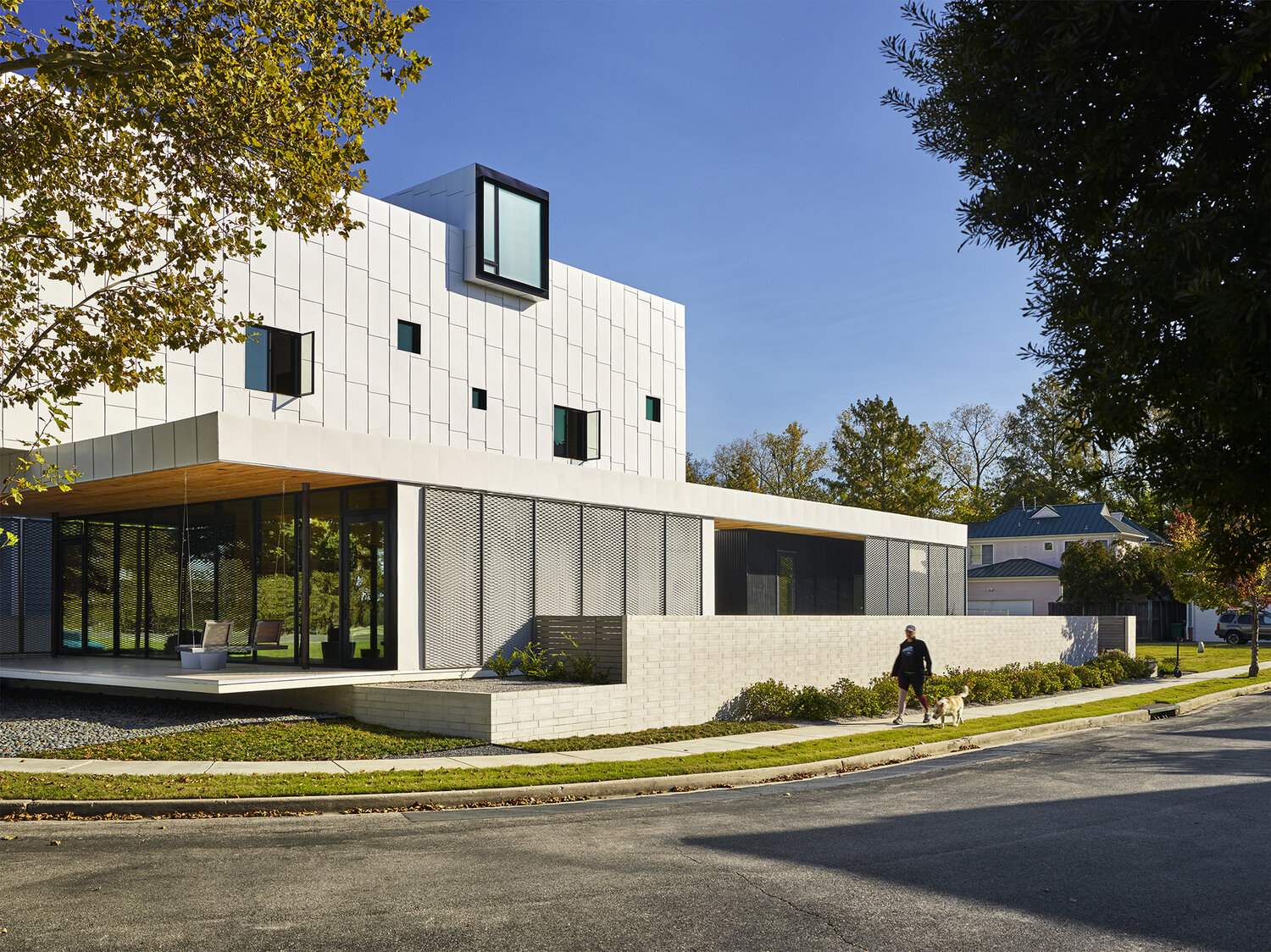Architectural metals like expanded mesh, perforated metal, and laser cut panels are a road less traveled in residential home design, but are gaining popularity and offer many great design opportunities.

Where do you find these materials used?
Outdoors, you’ll find these materials used as privacy screens, sunshades, or garden trellis. In contrast, on the inside, they can be used as wall accents, railing infills, room dividers, ceiling accents, and cabinetry infill panels.
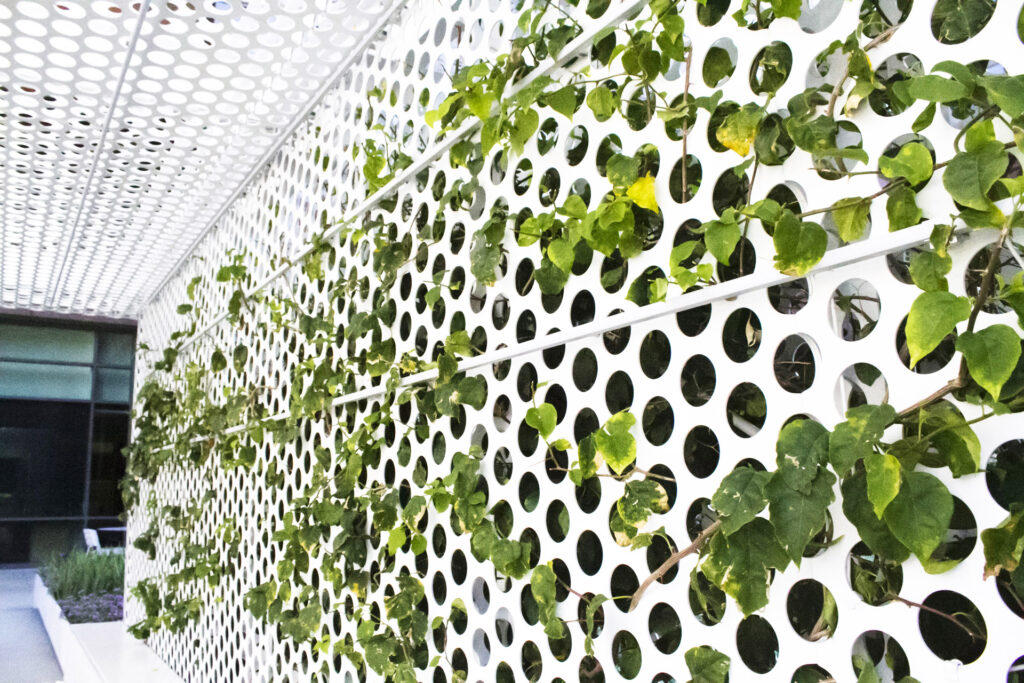
Unique Beauty:
These materials are not usually available at big box stores or home design centers. Instead, they are typically associated with high-end residential and hospitality design. However, adopting them into your home design can offer a unique texture and surface that can elevate your home’s unique appeal. Their unique surfaces and textures, especially when well-lit, can add drama and elegance to any space.
Introducing Color:
These materials also offer an opportunity to break from the color pallets of walls and introduce new colors, adding to an eclectic feeling of rich textures and hue variability.
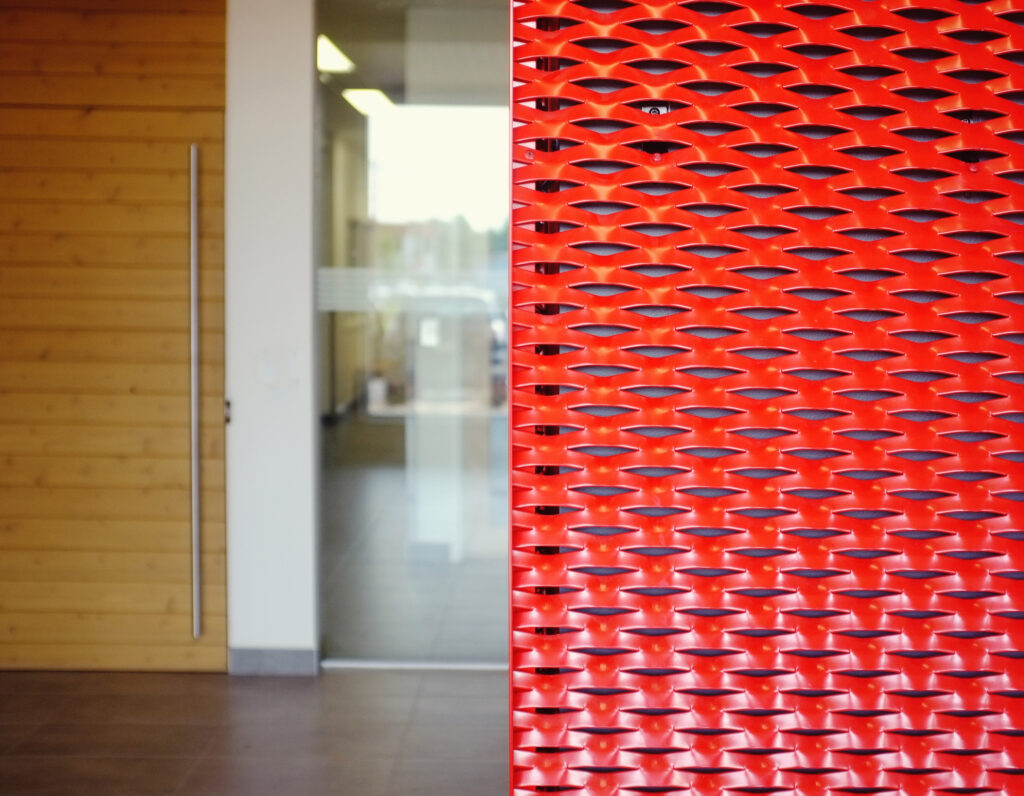
Defining Space:
These lightweight materials also offer the opportunity to define space without committing to a heavy opaque wall. Thin lightweight materials like laser-cut aluminum offer the opportunity to create a semi-transparent screen, room divider, or just visual breaks to define your space just the way you need it, with just the right texture and opacity.
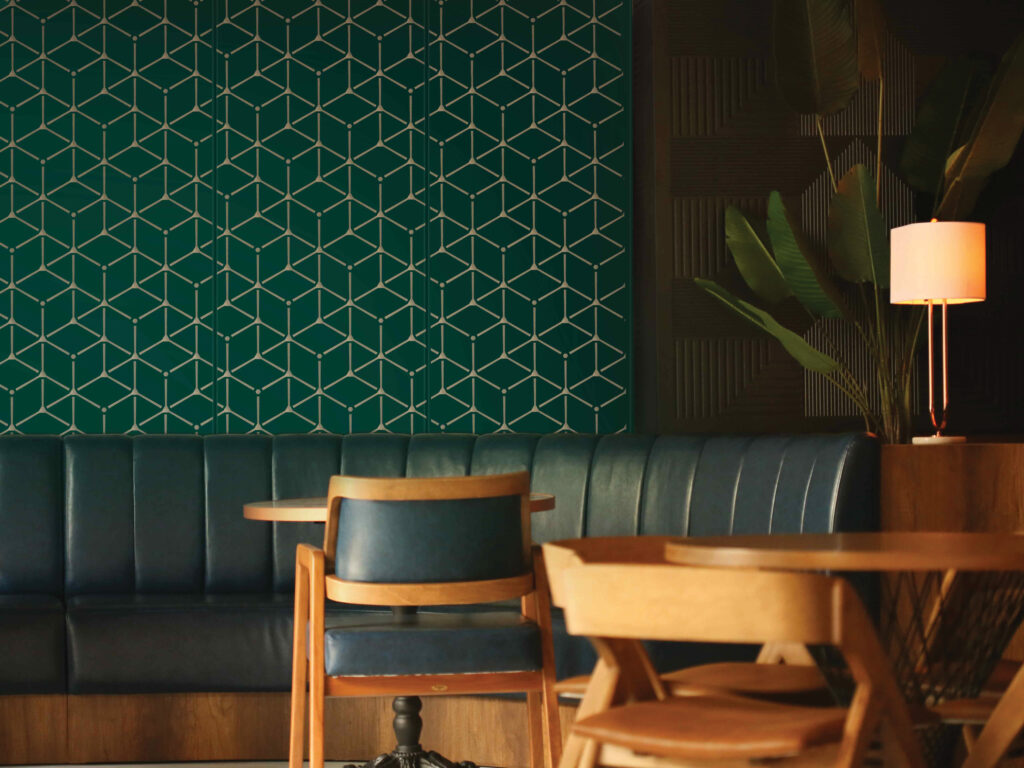
Functional Design Choice:
Most home designs seek to add as many windows as possible to allow light in; however, in many situations, depending on your home orientation, the windows may be letting in too much light and creating glare for all or at least parts of the day.
Expanded Mesh as a Residential Screen:
This home, called Civitas, was designed by Archimania, with guiding principles from the AIA Committee on the Environment to establish strong sustainability goals focused on equitable solutions, conservation and reclamation, onsite renewable energy, wellness and health, as well as adaptability to change. Civitas functions as a living laboratory and an immersive tool for experimental thinking. It provides performance data that can be analyzed over time and under changing conditions, revealing the broad applicability of high-performance design strategies across a variety of building types and scales. This Memphis home ultimately was the first residential home to achieve zero energy and zero carbon status, and ILFI and LEED Platinum certification.
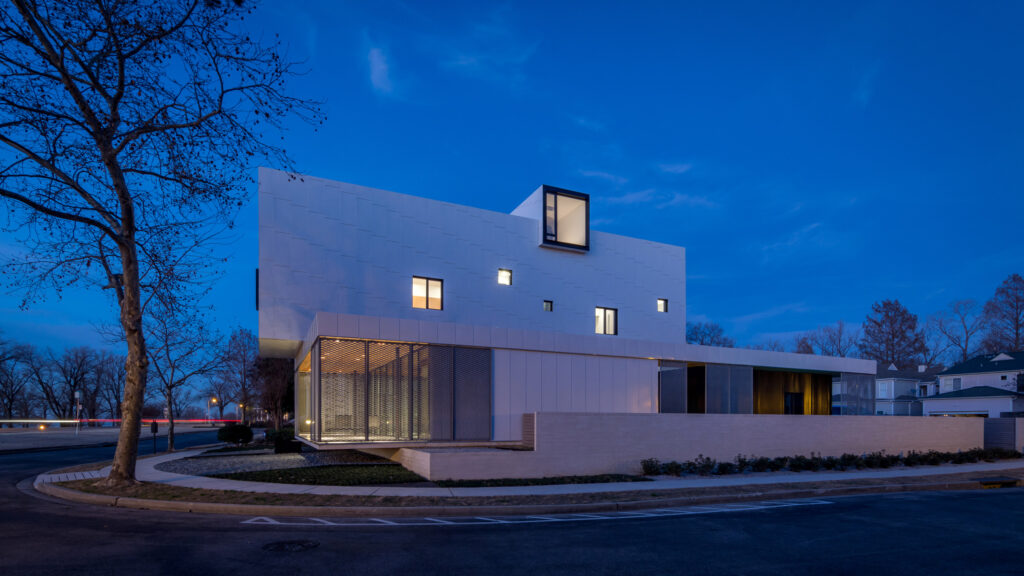
This home’s unique design features beautiful vistas of the Mississippi River and lots of windows to enjoy that view. Using AMICO Architectural Metals’ APEX03 expanded mesh and gradient mesh creates a perimeter screen.
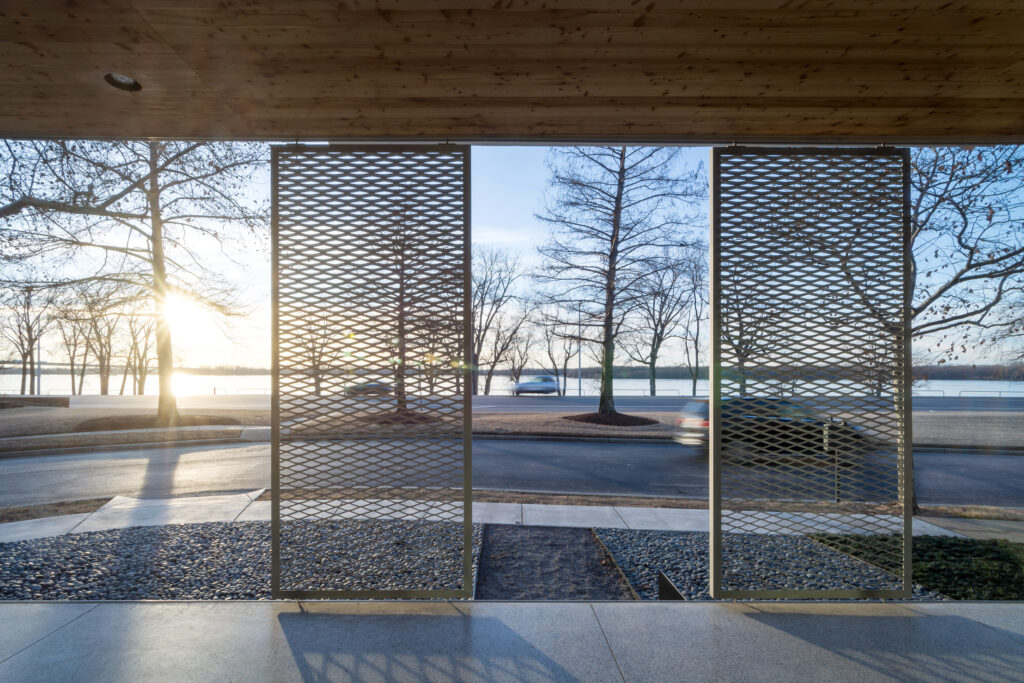
First, on one side, the mesh is used as a privacy screen that provides some visual separation from nearby neighbors. Along with that comes some extremely graceful shadowing inside the space that provides an elegant, unexpected play of light.
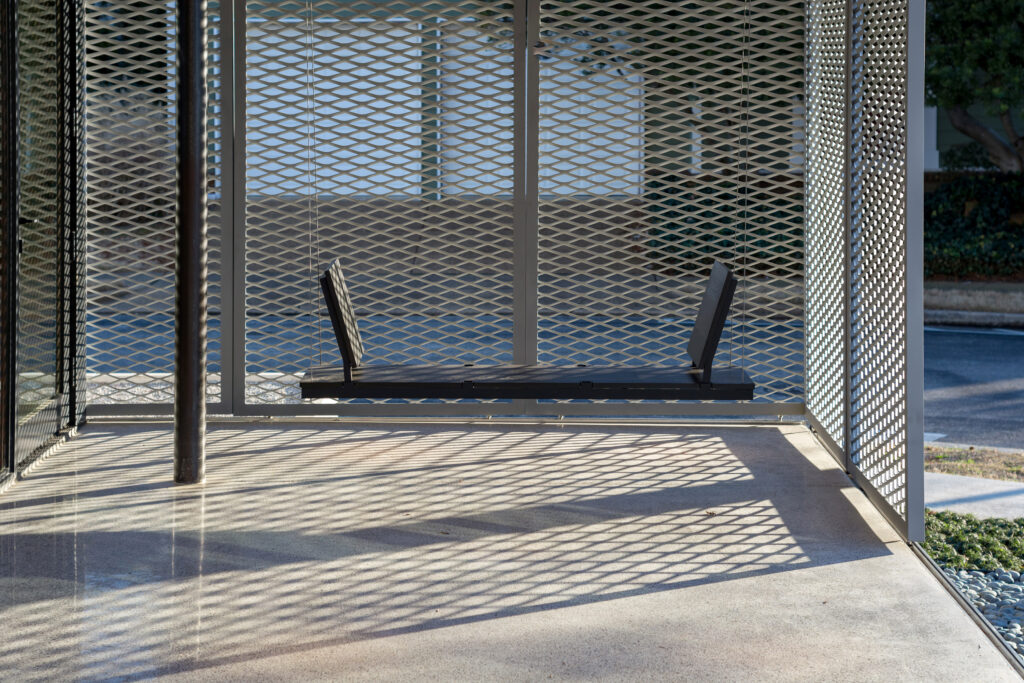
Screens on the front of the home serve as a sunshade as the sun sets in the western sky in the afternoon. The mesh provides shade very nicely while simultaneously offering openness to maintain an open feel. Two additional features about this sunshade make it unique. First, it uses a gradient mesh to maximize opacity in the areas of the panel that will impact the shading the most, making the panel as visually light and open as possible. The aluminum expanded mesh panel is welded into a frame, which is then placed in a track. This track system allows for the lightweight aluminum to be easily moved in the track to the best location to match the sun’s location during different seasons, while maximizing the view out onto the river.
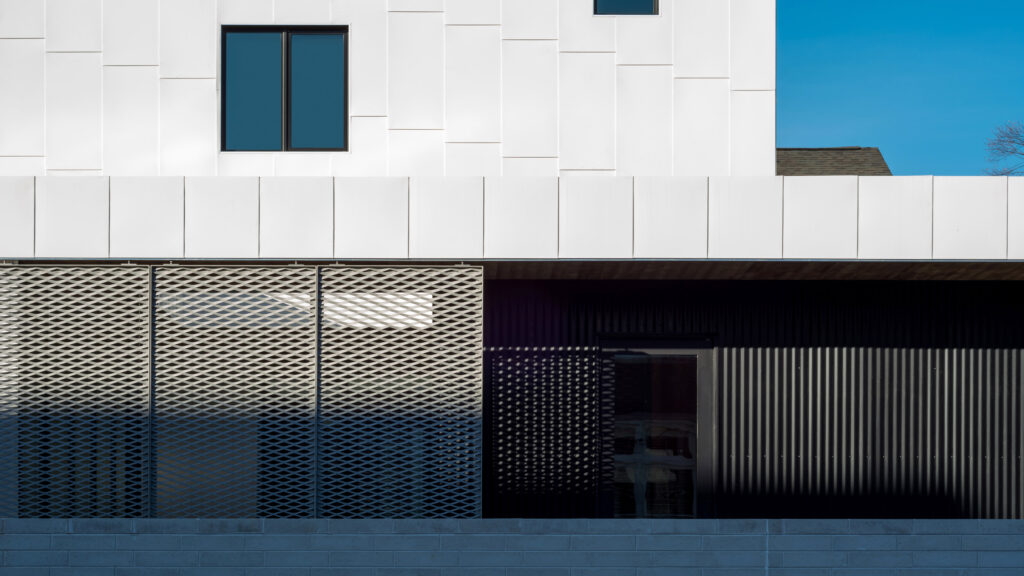
Why does sunshading matter?
- Natural Light: As LEDs evolve, we are getting further and further away from natural light. Natural light from the sun will make every home feel more comfortable and effortless. Research is showing that LED lighting may ultimately be bad for the human eye. Additionally, our bodies understand the need for natural light, as many studies have proven the positive impact of natural light on both physical and mental health. Designing a home like Civitas with so many windows, but with specific passive control elements for the light, is critical. Unmanaged light will create glare and unnecessary heat gain. With effective management of light with passive sunshade screens, a home’s reliance on harsh LED lighting can be minimized.
- Reducing Head Gain: The expanded mesh screen also reduces the heat gain into the home. The shading will ultimately reduce the burden on your HVAC system, leading to reduced energy consumption and carbon reduction.
- Shadows: The element of shadowing in your home can be a design feature unto itself. Expanded mesh’s unique, almost organic form creates a playful shadow that nearly mimics leaves on a tree. Laser cut panels, as well, can provide a wide array of show and light effects with the flexibility of that metal forming process, cutting an infinite variability of shapes.








